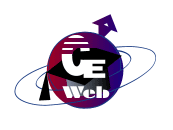|
[Paragraph Development]
[Outline]
[Summary]
[Essay Question] |
|
From Outline
to Composition |
|
By the time youˇ¦re able to develop a well developed
paragraph, you are also equipped the ability to write a
good composition based on rigid structure which starts
with an introduction paragraph, proceeds with three
discussion paragraphs or more, then ends up with a
conclusion of your discussion. The structure is revealed
in your outline. A good example such as this is analyzed
in the composition written by your fellow students.
|
|
ˇ@ |
|
Example 6 |
|
Topic: Birds
Title: The World of Bald Eagles |
|
ˇ@ |
|
Outline |
|
I.
Introduction
Thesis Statement: To fully understand eagles in depth, we have to look at
their
physical descriptions, their diet and feeding habits, as
well
as some interesting facts about them.
A. Curiosity
B. Representation
of many symbols
1. courage, vigilance, strength, and so on
|
|
II. Physical
Descriptions
A.
colors of back
and breast, head, neck and tail, feet and bill
1. blackish-brown
2. white
3. yellow
B. slightly
larger size of female eagles than male eagles
1. 35-37
inches in size against 30-34 inches
2. 79-90
inches about wingspan against 72-85 inches
C. long
and broad wings making the eagles effective for soaring
1. wing-flapping
to conserve energy
D. importance
of tail for flight and maneuvering
1. to
attain largest surface
2. to
fly up and high
E. 7000
feathers
1. lightweight
2. flexible
3. protective
to chicks from cold and heat
F. beak
as strong weapon
1. also
to groom mateˇ¦s feathers
2. and
feed portion of food to newly hatched chicks
3. hook at the tip of an
eagleˇ¦s beak for tearing meat
G.
talons
important for hunting and defense |
|
III.
Diet and Feeding
Habits
A. top
of the food chain
B. Where
to diet
1. coast,
lakes, and rivers
2. hunting
or home ranging from 1700 to 1000 acres
C. What
to eat
1. mainly
fish
2. available
food sources
3. sometimes
decaying flesh
D. How
to eat
1.
approaches
its prey quickly
2. one pound of fish consumed in about four
minutes
3. lifting power is about 4 ponds |
|
IV. Interesting
Facts
A. not
featherless
1. white feathers
B. the
same nest year after year
1. 34 years old nest weighed over two tons.
C.
flying speed and diving depth in water
1.
24-40 miles
per hour
2.
over 100 mph
D.
able to swim
1.
butterfly stroke
ˇ@ |
|
V. Conclusion
Suggestions: methods to protect the bird |
|
ˇ@ |
| ˇ@ |
ˇ@ |
 |
|
|
ˇ@ |
|
|
| ˇ@ |
| ˇ@ |


